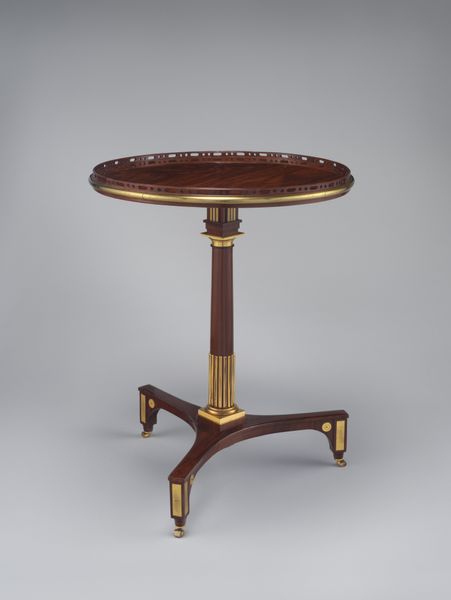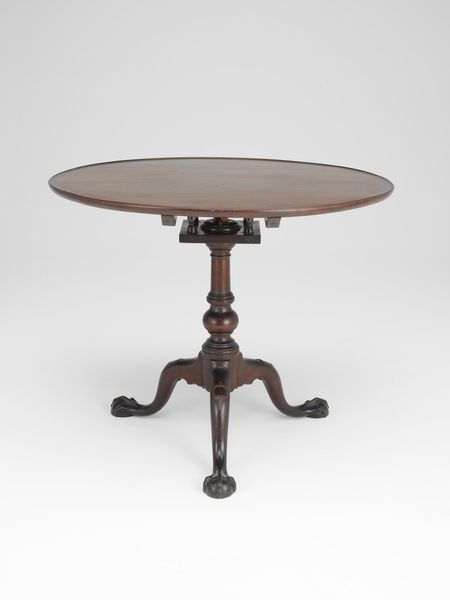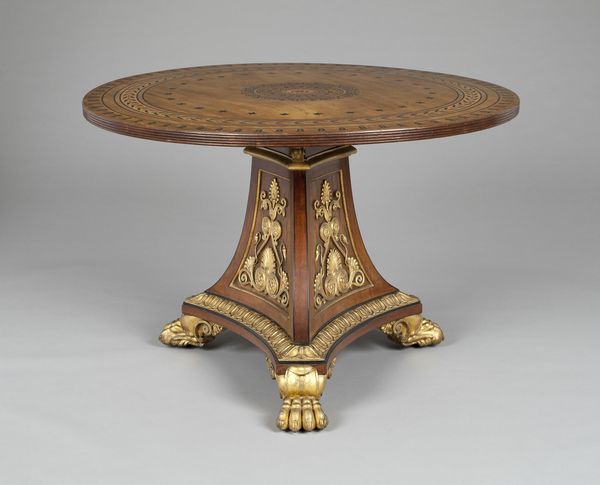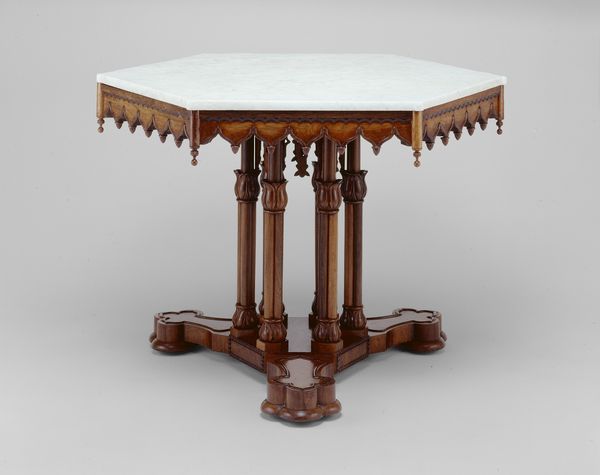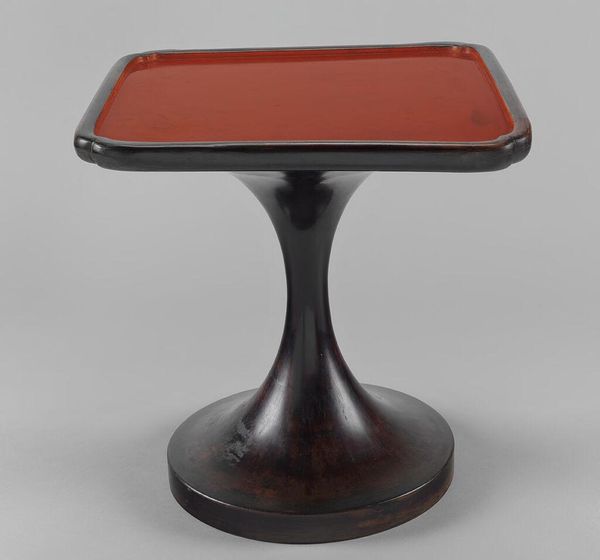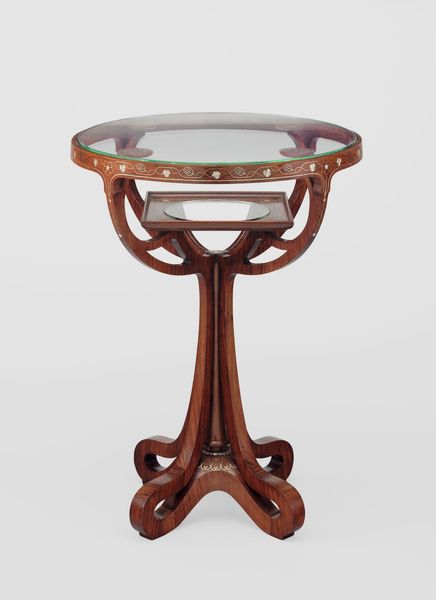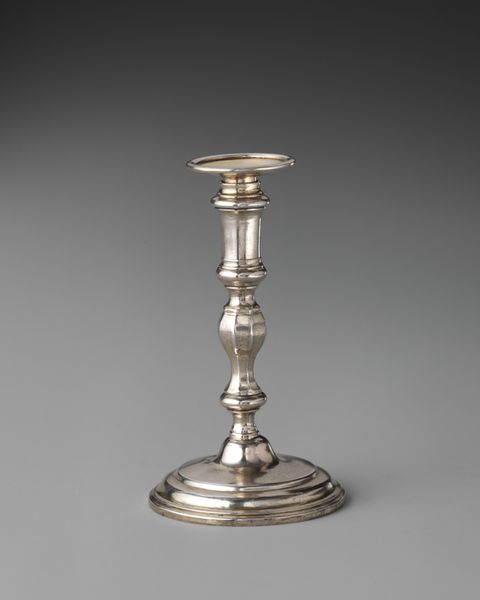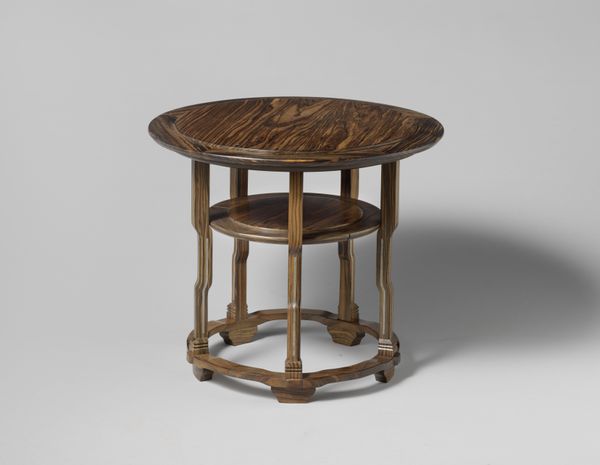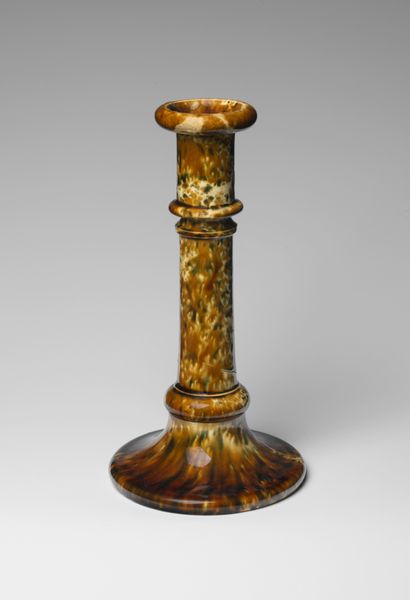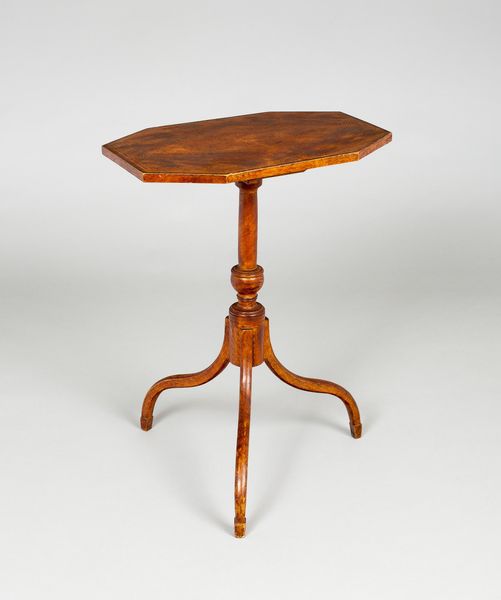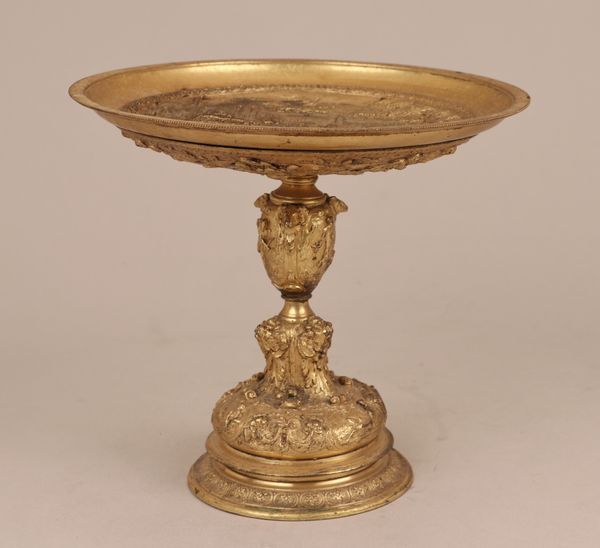
Vase in the shape of an archaic bronze vessel (gu) 18th century
0:00
0:00
ceramic
#
asian-art
#
ceramic
Dimensions: H. 10 1/8 in. (25.7 cm)
Copyright: Public Domain
Curator: The vessel before us, held here at the Metropolitan Museum of Art, is described as "Vase in the shape of an archaic bronze vessel (gu)." Created in the 18th century by Chen Jinhou, this ceramic piece evokes the powerful presence of ancient ritual bronzes. Editor: It certainly does have a striking verticality. The way the form rises, expanding then contracting, before culminating in that wide, shallow dish, creates an undeniable sense of formal balance. It feels very self-contained. Curator: The choice of the gu shape is key, isn't it? The gu was originally a ritual wine vessel used during the Shang and Zhou dynasties. So, by the 18th century, recreating it in ceramic becomes a way of connecting with a distant, idealized past. There is an element of reinterpreting hierarchies. Does the vase reflect a contemporary hierarchy? Editor: Possibly, but if you ignore its cultural function, look at the precision of its creation. Note the consistent colour, and how the various textured elements work in concert with the shape, especially where the surface seems to emulate the look of aging bronze. It feels meticulously controlled, despite its size. Curator: And I’m particularly interested in how this “copy” changes the socio-cultural meaning, perhaps. It’s a re-presentation of power, an echo of ritual meant for different eyes. The fact that this elaborate bronze-esque vessel could sit on a shelf rather than at a sacrifice transforms its presence entirely. It’s meant for display, no? Meant to evoke conversation and, likely, admiration. It’s participating in its own history, wouldn't you say? Editor: Yes, its meticulous form elevates the piece itself to that end. What's remarkable is how successful it is. Regardless of function, one must marvel at its careful consideration of shape, scale, texture, and form. I suppose my final assessment here circles back to this piece standing quite assuredly in its own aesthetic integrity. Curator: So, in the end, does this piece suggest that the weight of tradition always anchors our re-imaginings of value and beauty? Perhaps one’s cultural history serves the re-interpreter by making beauty, not truth, the justification for the past. Editor: An intriguing suggestion. Certainly, a formal, structural lens invites exploration, one layer at a time, for what stands apart on its own merits.
Comments
No comments
Be the first to comment and join the conversation on the ultimate creative platform.
